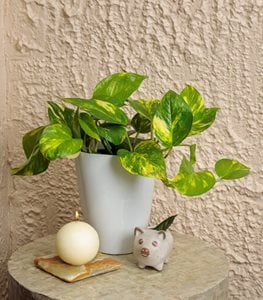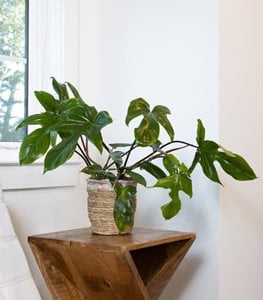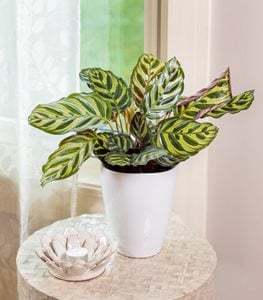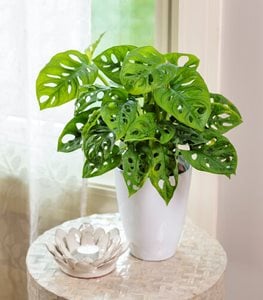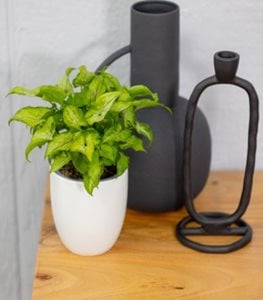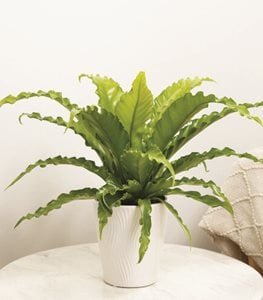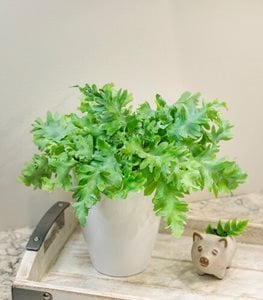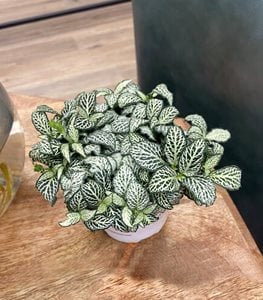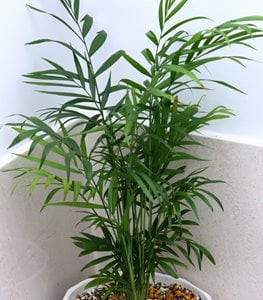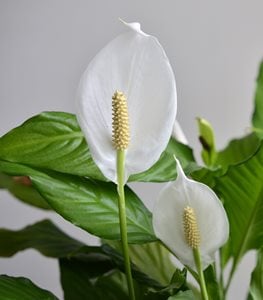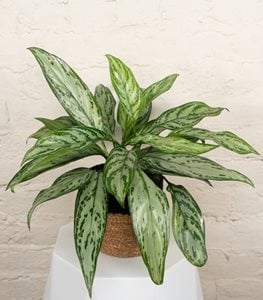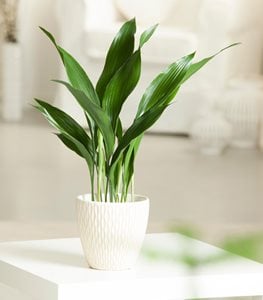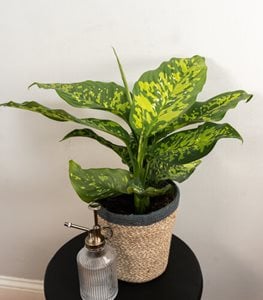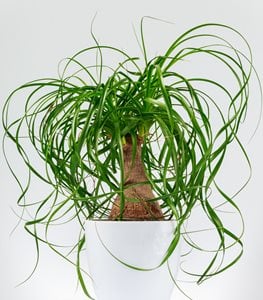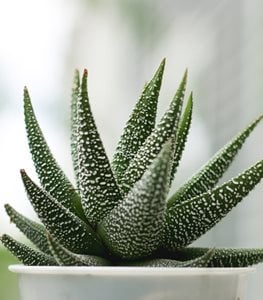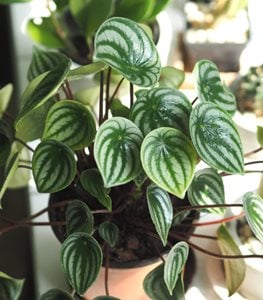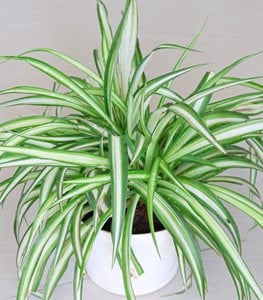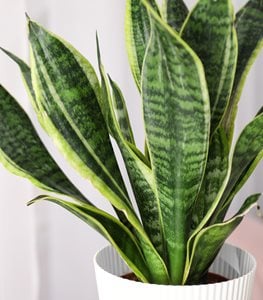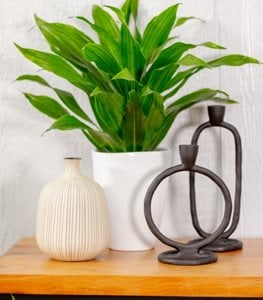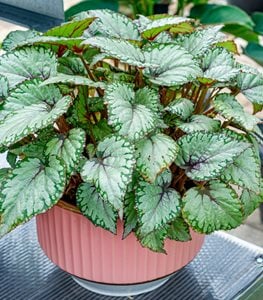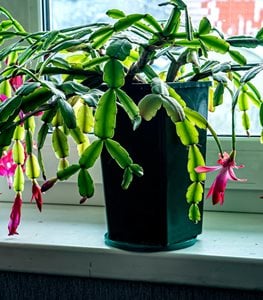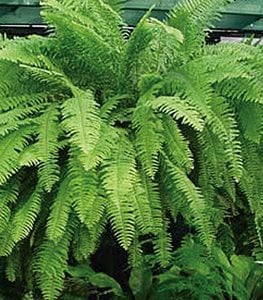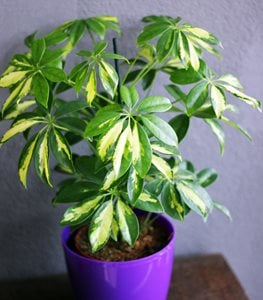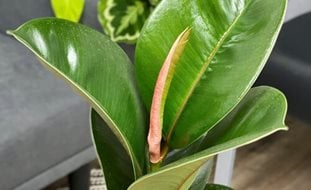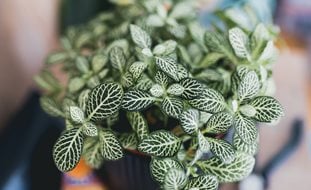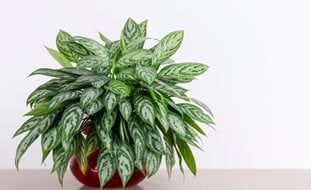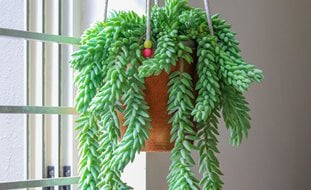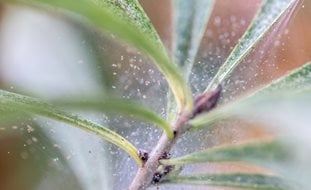24 Best Low-Light Houseplants
Have a dark room where nothing seems to grow? These shade-loving plants are the perfect solution.Unless you’re a cave dweller, you can grow a houseplant in your home, even if it lacks a sunny windowsill. It’s simply a matter of picking the right plant for your environment—one that doesn’t mind if the sun doesn’t shine.
Fortunately, there are dozens of beautiful houseplants that thrive in shadowy places, making it possible to put a diverse array of greenery in almost every room. As a bonus, many low-light houseplants also tolerate neglect (and sometimes prefer it), so you don’t need a green thumb to keep them content.
On this page: Low-Light Houseplants | Care Tips
On this page:
24 INDOOR PLANTS FOR LOW LIGHT
POTHOS (Epipremnum aureum)
Size: Vines up to 10 feet
Water: Allow the top inch of soil to dry out between watering.
Light: Although bright indirect light is preferred, pothos plants will tolerate low light. Leaves will lose some of their variegation if grown in too little light.
One of the easiest houseplants to grow, this tropical vine comes in a variety of foliage colors and patterns. Pothos can be trimmed and kept compact, allowed to trail from hanging baskets, or trained up vertical supports. Learn more about growing pothos.
PHILODENDRON (Philodendron spp.)
Size: Vines up to 8 feet
Water: Prefers soil that's evenly moist, but not soggy. Water if top inch of soil is dry.
Light: Tolerates low light, but will grow faster in medium to bright light.
Another very easy-to-grow houseplant, similar to pothos. Foliage comes in a variety of sizes, shapes, and colors. Can also be grown outdoors in mild climates if kept out of direct sunlight. Learn more about how to grow philodendron plants.
CALATHEA (Calathea spp.)
Size: Up to 3 feet tall
Water: Keep evenly moist, but not soggy. May be sensitive to tap water, so use distilled or filtered water.
Light: Although prefers bright indirect light, will tolerate low light; however, the markings will be less distinct.
Also called rattlesnake plant, peacock plant, or prayer plant, this popular houseplant is grown for its beautifully variegated foliage, which comes in an assortment of vibrant patterns and colors. Some cultivars also have leaves with purple or red undersides. Calathea don't like dry air or drafts so grow them in a terrarium, bathroom, or other high-humidity environment. Learn more about how to grow calathea plants.
MONSTERA(Monstera spp.)
Size: 3 to 20 feet tall
Water: Deeply water every 1 to 2 weeks, or whenever the soil feels dry. Drooping leaves often mean your plant needs a drink.
Light: Prefers medium light, such as from an east-facing window. Leaves are easily sunburned, so keep away from direct light.
Also known as Swiss cheese plant or split-leaf philodendron, this tropical beauty sports lush green leaves that develop deep slits or holes as they mature. In nature, these vine-like plants love to climb trees with their aerial roots, so provide a moss pole or other support to accommodate their ascent. Learn more about how to grow monstera plants.
ARROWHEAD VINE (Syngonium podophyllum)
Size: Vines up to 6 feet
Water: Keep the soil evenly moist but not soggy. If the soil surface feels dry or the leaves begin to droop, it’s time to water.
Light: Prefers bright indirect light, but can adapt to low light. Brighter light will result in better foliage color.
How this plant got its name is obvious by the distinctive shape of its pointed leaves, which display a wide array of different color variations and patterns. As the plant matures, it develops a vining habit and will readily climb a trellis or other vertical support. But you can also keep it compact and bushy by pruning regularly. Learn more about how to grow arrowhead plants.
BIRD'S NEST FERN (Asplenium) spp.
Size: Up to 2 feet tall
Water: Keep soil evenly moist, but not soggy. Water at the edge of the rosette so water doesn't pool in the center and cause rot. In dryer areas of the home, mist the leaves occasionally to boost humidity levels.
Light: Prefers indirect, filtered light, such as from a north-facing window. Keep away from harsh sunlight, which can burn the fronds.
This elegant vase-shaped fern makes a stunning centerpiece for a table or plant stand, with fronds unfurling from a central rosette that resembles a bird’s nest. Like most ferns, this rainforest denizen grows well in shady locations, but doesn’t like dry conditions.
BLUE STAR FERN (Phlebodium aureum)
Size: 10 to 24 inches tall
Water: Keep soil evenly moist, but not soggy. Don't allow the soil to dry out completely, as this can cause the leaf edges to brown.
Light: Provide moderate filtered light; no direct sunlight. A north- or east-facing window is ideal.
This fern thrives in high humidity environments, so mist the leaves occasionally to raise humidity levels. This will also help prevent leaf edges from browning.
Proven Winners® leafjoy® Cocoon® Collection
Low-light plants for interior rooms.
These plants are homebodies, preferring to spend their time in the lower light levels of interior rooms or those with smaller windows. Their sanctuary is a room that faces north or east.
NERVE PLANT (Fittonia albivenis)
Size: 6 to 8 inches tall
Water: Water when the soil surface begins to feel dry. Drooping leaves are another sign that your plant needs water.
Light: Low to moderate indirect light. Keep away from bright sunlight.
Named for the intricate veins running through its foliage, this charming houseplant (also called mosaic plant) is ideal for brightening up small containers and terrariums. The leaves come in many different color combinations and sizes, usually with white, pink or red veining. Although nerve plant grows well under a wide range of light conditions, this rainforest native needs adequate moisture and humidity to thrive. Learn more about how to grow nerve plants.
ZZ PLANT (Zamioculcas zamiifolia)
Size: 2 to 3 feet tall
Water: Every 2 weeks or when the top inch or two of soil feels dry. Water less frequently if growing under low-light conditions.
Light: Will adapt to low light, but prefers medium to bright indirect light; also does well under artificial lighting.
Also called “Zanzibar gem” because of its African origin, ZZ plant is prized for its stunning foliage, which is so green and glossy it almost looks polished. You can also find newer varieties with variegated or deep purple leaves. A great houseplant for the neglectful owner because it tolerates sporadic watering and can go for years before it needs repotting. Learn more about how to grow ZZ plants.
PARLOR PALM (Chamaedorea elegans)
Size: Up to 4 feet tall
Water: Avoid overwatering, but keep the soil evenly moist. Mist the leaves occasionally, especially during winter.
Light: Provide moderate light, but no direct sunlight. A north- or east-facing window is ideal.
Also known as Neanthe bella palm, this Central American native become popular during the Victorian era, when it would often be placed in dim parlor rooms because of its ability to adapt to low light. The graceful shape and dense foliage make it a beautiful architectural accent.
PEACE LILY (Spathiphyllum spp.)
Size: 1 to 6 feet tall
Water: Keep soil evenly moist, but not soggy. Don't allow the soil to dry out completely. The leaves will droop dramatically when your plant is thirsty.
Light: Low to medium indirect light.
Usually grown for its showy white flowers, the peace lily is a particularly attractive foliage plant when not in bloom, with glossy green leaves sometimes enhanced by variegated patterns. It’s also one of the best houseplants for improving indoor air quality. Bright light results in better flowering, but don’t burn the leaves by exposing them to direct sunlight. Learn more about how to grow peace lily plants.
CHINESE EVERGREEN (Aglaonema spp.)
Size: 2 to 3 feet tall
Water: Keep soil evenly moist, but not soggy. Wilted leaves are a sign of underwatering; overwatering may cause stem or root rot.
Light: Low light (bright enough to read by) is sufficient. Plants with darker green leaves can tolerate less light, while variegated varieties prefer brighter light. Never place in direct sunlight.
Here’s a plant you can grow almost anywhere because it adapts to a wide range of indoor growing conditions, including poor light. Most varieties have lush green leaves attractively patterned with silver, pink or red. When grown in brighter light, Chinese evergreens will also produce pretty, peace-lily-like blooms. Learn more about how to grow Chinese evergreen plants.
CAST IRON PLANT (Aspidistra elatior)
Size: 15 to 24 inches tall
Water: Water moderately in spring and summer, less often in fall and winter. Allow the soil to dry between watering.
Light: Moderate to shady. Ideal for dimly lit rooms with north-facing windows.
Few plants tolerate poor light levels better than this one. Named for its tough-as-nails constitution, it can also withstand almost any type of abuse, with the exception of overwatering. Extremely slow growing, often taking years to reach its full height.
DUMB CANE (Dieffenbachia)
Size: 3 to 6 feet tall
Water: Water when the soil feels dry to a depth of 1 inch.
Light: Tolerates lower light levels, although prefers bright indirect light, such as from an east- or west-facing window.
Grown for its striking variegated foliage, this highly adaptable houseplant can tolerate a wide range of light conditions and can even be grown outdoors in warmer climates if kept out of direct sunlight. Named for its toxic effect when ingested, so keep out of reach of pets and children. Learn more about how to grow dumb cane plants.
PONYTAIL PALM (Beaucarnea recurvata)
Size: Very slow growing, but can eventually reach a height of 6 feet or taller
Water: Every 3 to 4 weeks, or when the top 2 to 3 inches of soil feels dry. Avoid overwatering, which can cause the leaves to turn yellow.
Light: Prefers medium to bright indirect light, but will adapt to lower levels.
Topped by a cluster of long, narrow leaves that sprout up from the trunk like a ponytail, this exotic-looking succulent is sometimes called elephant’s foot tree because of its fat base that also acts as a water reservoir, allowing it to go for weeks without a drink. Adaptable to a wide range of light conditions.
ZEBRA HAWORTHIA (Haworthiopsis attentuata)
Size: 3 to 5 inches tall
Water: Allow the soil to dry out completely between watering.
Light: Will tolerate low light, but prefers moderate to bright indirect light.
Cute and compact, this slow-growing succulent forms attractive rosettes of fleshy green leaves accented by bands of pebbly white speckles. Ideal for low-light terrariums or any windowsill where it won’t receive direct sunlight.
PEPEROMIA (Peperomia obtusifolia)
Size: 6 to 12 inches tall
Water: Every 7 to 10 days, or when the top inch or two of soil feels dry to the touch.
Light: Will tolerate low light, but for the best leaf color, grow under bright indirect light, such as an east- or west-facing window. Can also be grown under fluorescent lighting.
Perhaps no houseplant offers a greater array of foliage colors, textures, and shapes than peperomia. Most varieties are also small in size, making them ideally suited for shelves, tabletops, and windowsills. Because peperomias are native to tropical regions, they prefer moderate to high humidity and thrive in places like terrariums and brightly lit bathrooms. Learn more about how to grow peperomia plants.
SPIDER PLANT (Chlorophytum comosum)
Size: 8 to 24 inches tall
Water: Water when the top inch of soil feels dry. Avoid overwatering, which can lead to root rot.
Light: Tolerates poor light, but prefers moderate indirect light.
One of the most popular houseplants around, spider plant tolerates poor light and neglect, but will thrive in good conditions, producing a multitude of offshoots that can easily be propagated to grow new plants. It’s also an effective remover of indoor air pollution. Learn more about how to grow spider plants.
SNAKE PLANT (Sansevieria spp.)
Size: 6 inches to 4 feet tall
Water: Once every week or two, or whenever the soil feels dry.
Light: Thrives in everything from bright light to dimly lit corners, although you’ll see more consistent growth in brighter light. Don’t place in direct sunlight.
Sansevieria is similar to cast iron plant in its ability to survive almost anything, including low light levels and drought. The snakeskin-like foliage is typically flat or slightly concave, but you can also find interesting cultivars with twisted and tubular leaves. Learn more about growing snake plants.
DRACAENA (Dracaena spp.)
Size: Up to 6 feet or taller
Water: Water once a week or so, or when the surface of the soil feels dry. Plants in brighter light may need more frequent watering.
Light: Tolerates low light, but grows best in medium to bright indirect light.
Especially forgiving of low light and other challenging indoor growing conditions, dracaenas are beautiful houseplants with handsome sword-shaped foliage in a wide array of solid and variegated colors. Although some varieties are tree-like in appearance, others are compact and bushy, making them ideal for desks and tabletops. Learn more about how to grow dracaena plants.
REX BEGONIA (Begonia rex-cultorum)
Size: 12 to 18 inches tall
Water: Let soil approach dryness before watering and then water thoroughly. Decrease watering in the winter.
Light: Tolerates low light, but grows best with brighter indirect light. Direct sunlight can burn the leaves.
Also called painted-leaf begonias, these showy houseplants are grown primarily for their fancy foliage, which comes in a spectacular array of shapes, colors, and textures, including some cultivars with spiral-shaped leaves. They need adequate light to produce the best leaf color, ideally from an east- or west-facing window. Learn more about how to grow begonias.
CHRISTMAS CACTUS (Schlumbergera x buckleyi)
Size: 6 to 12 inches tall, with a spread of up to 2 feet
Water: Water only when the top inch or two of soil feels dry to the touch. Overwatering can cause stem and root rot.
Light: Will tolerate low light, but for best growth, keep in bright but indirect light, except when trying to set flower buds. At that time, plants will need at least 12 hours per day of total darkness.
Here’s a cactus that doesn’t need bright sunlight to thrive and actually prefers darkness when it gets ready to set the buds for its beautiful (and timely) winter-blooming flowers. Although often considered a holiday plant, these long-lived cacti can survive for years when well cared for. Learn more about how to care for Christmas cactus.
BOSTON FERN (Nephrolepis exaltata)
Size: 1 to 3 feet tall and wide
Water: Keep the soil evenly moist but not saturated. Boston ferns love humidity and will often benefit from regular misting, especially during the winter.
Light: Tolerates low light, but ideally suited for moderate to bright light from an east-facing window.
Instantly recognizable by its arching fronds of feathery foliage, Boston fern has few rivals if you’re looking for a low-light plant that looks gorgeous displayed on a pedestal or spilling from a hanging basket. As long as you keep plants away from dry air and cold drafts, they will thrive in most indoor environments. In warm weather, they are equally at home growing on a shaded patio or porch.
DWARF SCHEFFLERA (Schefflera actinophylla)
Size: Up to 6 feet or taller
Water: Water thoroughly, allowing the water to drain from the bottom of the pot, and then wait until the soil is nearly dry before watering again.
Light: Tolerates low light, but prefers bright indirect light from an east- or west-facing window, away from harsh sun rays. Will also grow well under artificial light.
Sometimes called dwarf umbrella tree because the palmate leaves spread out like the ribs of an umbrella, this evergreen shrub from Taiwan stays much smaller than its taller cousin (S. Actinophylla) but can still reach impressive heights, even when grown indoors. Although the leaves are usually deep green and glossy, you can find newer cultivars adorned with splashes of gold, yellow or cream.
5 CARE TIPS FOR LOW-LIGHT HOUSEPLANTS
1. Don't overwater. Plants grown in dim light usually have slower growth rates and lower water requirements than those exposed to bright sunshine. Allow the soil to dry out a bit between waterings to avoid root rot.
2. Provide even light exposure. If your plants seem to be stretching toward the light source, rotate them regularly to give them even light exposure or move them to a different location with brighter light conditions. Many plants that tolerate low light may actually grow better in slightly brighter or medium light.
3. Keep away from direct sunlight. Many low-light plants hail from tropical regions, where blazing sunlight is filtered out by a dense tangle of leafy trees and vines. In sunnier rooms, move your plants back from the light or draw the curtains during the hottest part of the day to avoid scorching or discoloring the leaves.
4. Cut back on fertilizers. Most low-light plants are light feeders. Apply a diluted liquid houseplant fertilizer from spring through fall while plants are actively growing. Don’t fertilize at all during the winter.
5. Add supplemental lighting if necessary. It’s OK to put your shade-loving plants in areas far from a window, but don’t relegate them to dark, dingy corners or windowless rooms. It you have a space with little natural light, use supplemental artificial lighting (such as fluorescent or LED grow lights) to boost plant performance.
